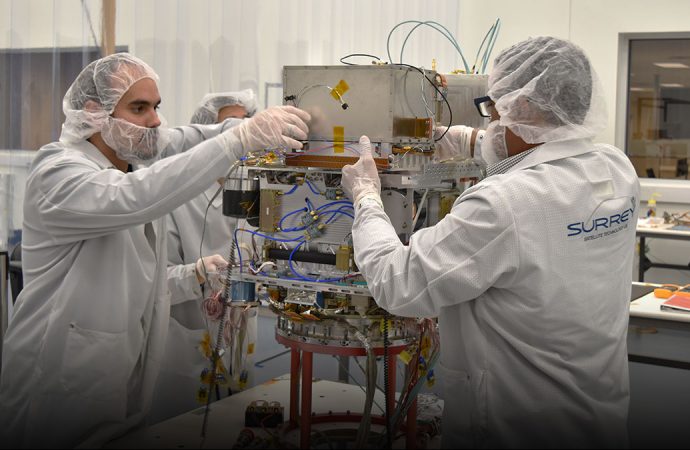NASA’s atomic-clock-in-space officially began its year-long mission on Friday, according to a NASA release.
Source: Gizmodo
The “toaster-sized” device launched back in June aboard a commercial satellite. Ultimately, a deep-space atomic clock would allow NASA to pilot its spacecraft more efficiently with better accuracy. The goal of this mission is simply to test and see if such a clock will stay accurate in space.
“The goal of the space experiment is to put the Deep Space Atomic Clock in the context of an operating spacecraft—complete with the things that affect the stability and accuracy of a clock—and see if it performs at the level we think it will: with orders of magnitude more stability than existing space clocks,” said navigator Todd Ely, principal investigator of the project at Jet Propulsion Lab, in the press release.
Today, spacecraft navigation requires a two-way communication link. NASA sends a signal from the deep space network (DSN) dishes to the spacecraft, which sends the signal back to Earth. The amount of time this operation takes and the changes to the signal caused by the spacecraft’s motion, called its Doppler shift, are compared to the motion of Earth with the help of Earth-based atomic clocks, allowing scientists to determine the spacecraft’s trajectory. Only then can they send navigation instructions to the craft.
But a very precise atomic clock would allow scientists to measure the Doppler shift and the spacecraft’s trajectory without sending a signal up first. And switching to navigation based on one-way communication would offer plenty of benefits. For distant missions, scientists wouldn’t need to wait for their signal to arrive at the spacecraft and return to Earth to know where the craft is—they could begin tracking as soon as they received the craft’s signal. It would also allow NASA to track more spacecraft with fewer DSN antennae, according to a 2012 summary of the mission.
The Deep Space Atomic Clock (DSAC) consists of an oscillating electric field at approximately the frequency that mercury atoms oscillate between two atomic states. The mercury atoms oscillate at an exact frequency, correcting the approximate frequency provided by the oscillating field. These exact frequencies can then be used for timekeeping and for scientists on Earth to measure the Doppler shifts of signals to figure out the craft’s trajectory.
Initially, the DSAC team proposed placing the clock onto the Mars InSight lander, according to the 2012 mission summary. Instead, it is now on an Earth-orbiting commercial satellite.
The mission will last a year, after which scientists will analyze the results.

































Leave a Comment
You must be logged in to post a comment.